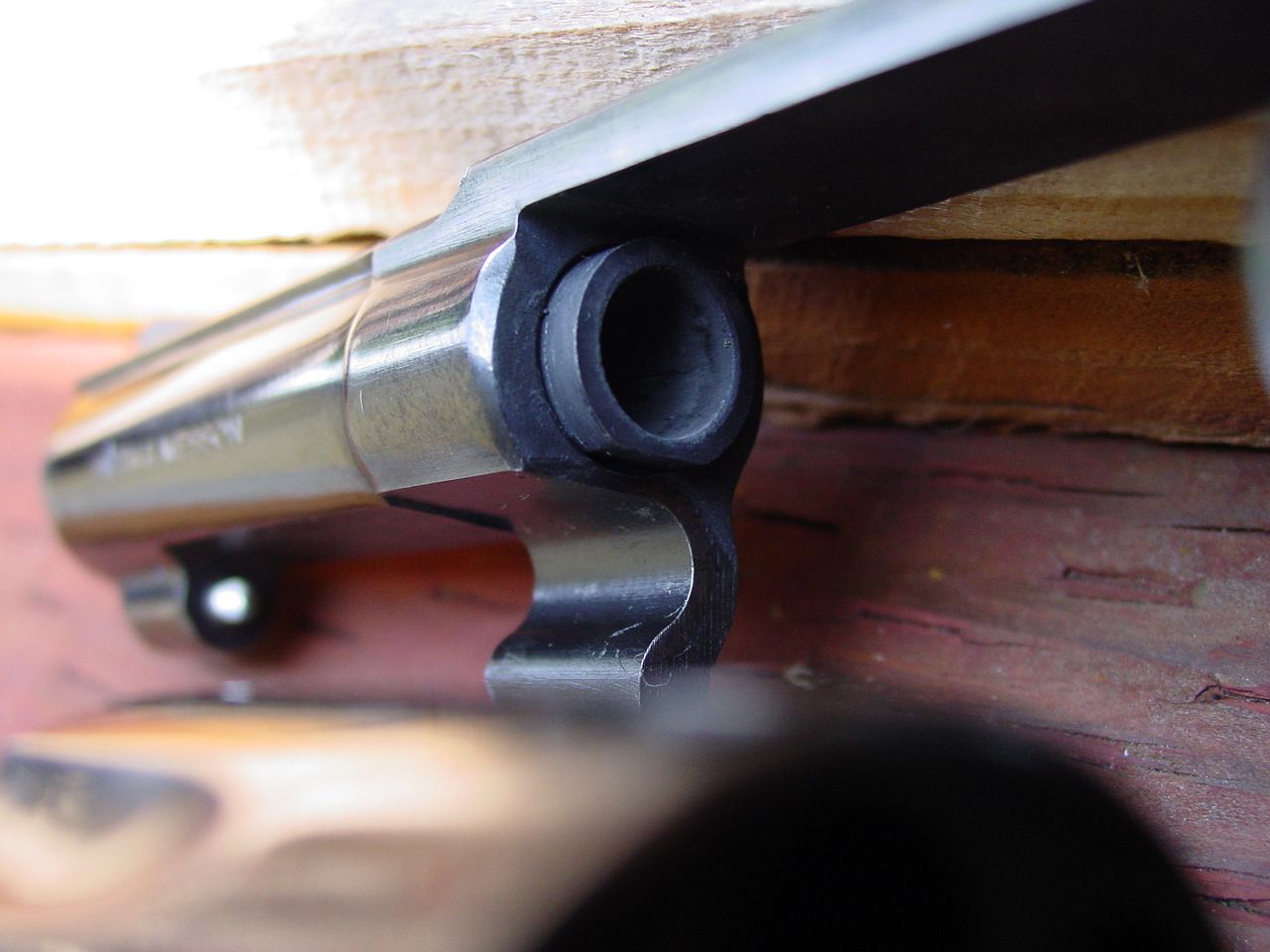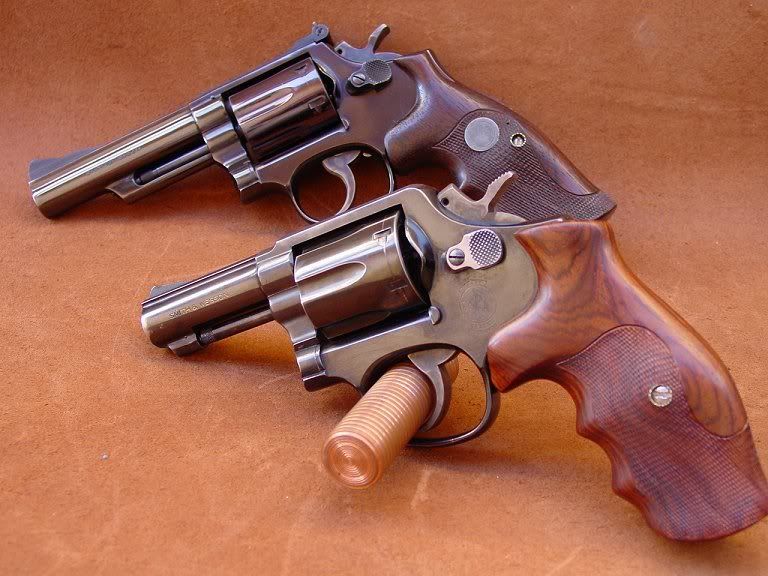.....why does there seem to be a consensus of the "practice with 38's, carry 357's" if the K's can hold up to a steady diet of 357's ?
Because the above statement is incorrect, wrong.
When the M19 was introduced in 1955 Bill Jordan and S&W said that it was a gun to allow lawmen and others to use their 38 Spl. for practice and use their duty loads in 357 on the job. It was the first time any small framed handgun was chambered in 357 Magnum and it was a game changer. It was built on a beefed up K frame.
Today we take the .357 Magnum for granted. But when first introduced in 1935 it was not. No other load was as powerful. The M19 was introduced in 1955.
Most police ammo in the mid 50's that was .357 was 158 gr. jacketed soft point or lead. Most folks back then did not shoot a whole lot of 357 through their K frames. This was because the 38 Spl. was the most widely used revolver round for self defense and because of muzzle blast and recoil. As time went on this changed. There were few reported issues with the K frames other than premature wear when a lot of .357 was fired and more frequent trips to gunsmiths for tune ups. But that was expected. Most folks forgot the earlier talk about their role.
There was no consensus on how to use them, it was forgotten. They were proven to work well with .357 ammo.
The first serious issues with the K frame .357 ammo began after the appearance of Super Vel ammo in the 1970s. This was the first more or less reliable jhp ammo that actually more or less expanded for the .357 Mag. Lee Jurras loaded his ammo hot a 110 jhp bullet from a 4" barrel at over 1450 fps and a 125 gr. at very close to 1400 fps. This set a new standard of speed and performance. It became the go to round for many in law enforcement and every other ammo manufacturer followed where Jurras led. This was when the K frames first began to show issues in premature erosion of the forcing cones and occasionally cracked forcing cones. This development took time. As I mentioned the earlier advice from Jordan was forgotten. S&W issued no warnings at any time, none were really needed. There was no consensus on how the gun should be used and a good many ended up abusing the guns. More guns had no issues than the small number that did.
The changes in competitive handgunning also revealed the weaknesses of the K frames. Many were simply shooting them more than ever before with hotter loads. Some did not keep the guns clean.
S&W did beef up the guns some and the erosion and cracking did not effect the stainless steel guns as often as it did the carbon steel guns (for the same reasons that machining carbon steel is easier than machining stainless steel). The area of the frame beneath the forcing cone was again strengthened.
In this pic of an early M13 note the thin area beneath the forcing cone.

When the FBI adopted the M13 as their carry gun back in the day they choose a 158 gr. +P 38 Spl. LHP round as their choice of ammo. Not because the K frame could not handle .357 ammo but because with the hot .357 loads the shooting scores of their agents dropped due to muzzle flash and recoil. They had the sense to match the ammo to the gun and to the skills of the shooters.
The M13 below has many thousands of .357 ammo through it with no issues. It's from the early 1980s. For carry I choose a 158 gr. jhp at about 1,000 fps. It's very manageable.

When folks today say
why does there seem to be a consensus of the "practice with 38's, carry 357's" if the K's can hold up to a steady diet of 357's ?
it's because of the internet and many, many folks having to explain how the K frames 357s developed and why the K frame .357s truly were and are legendary guns.
If you buy a Ford F150 and use it as a F150 they work well. If you try to use them as a Super Duty, well not so much. You can complain about that all day, but the onus is on the driver. If the M19 is not a Ruger Redhawk, don't blame the gun blame the shooter that can't see or feel the difference.
tipoc


